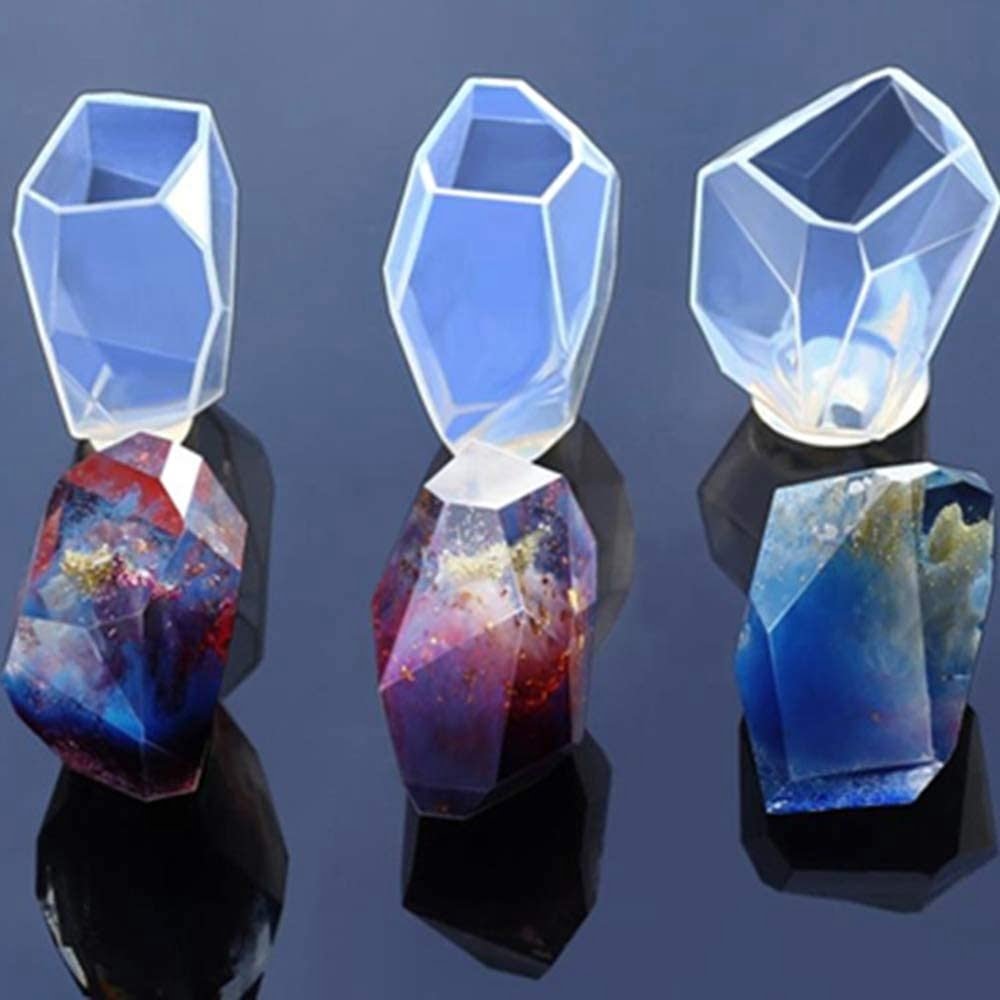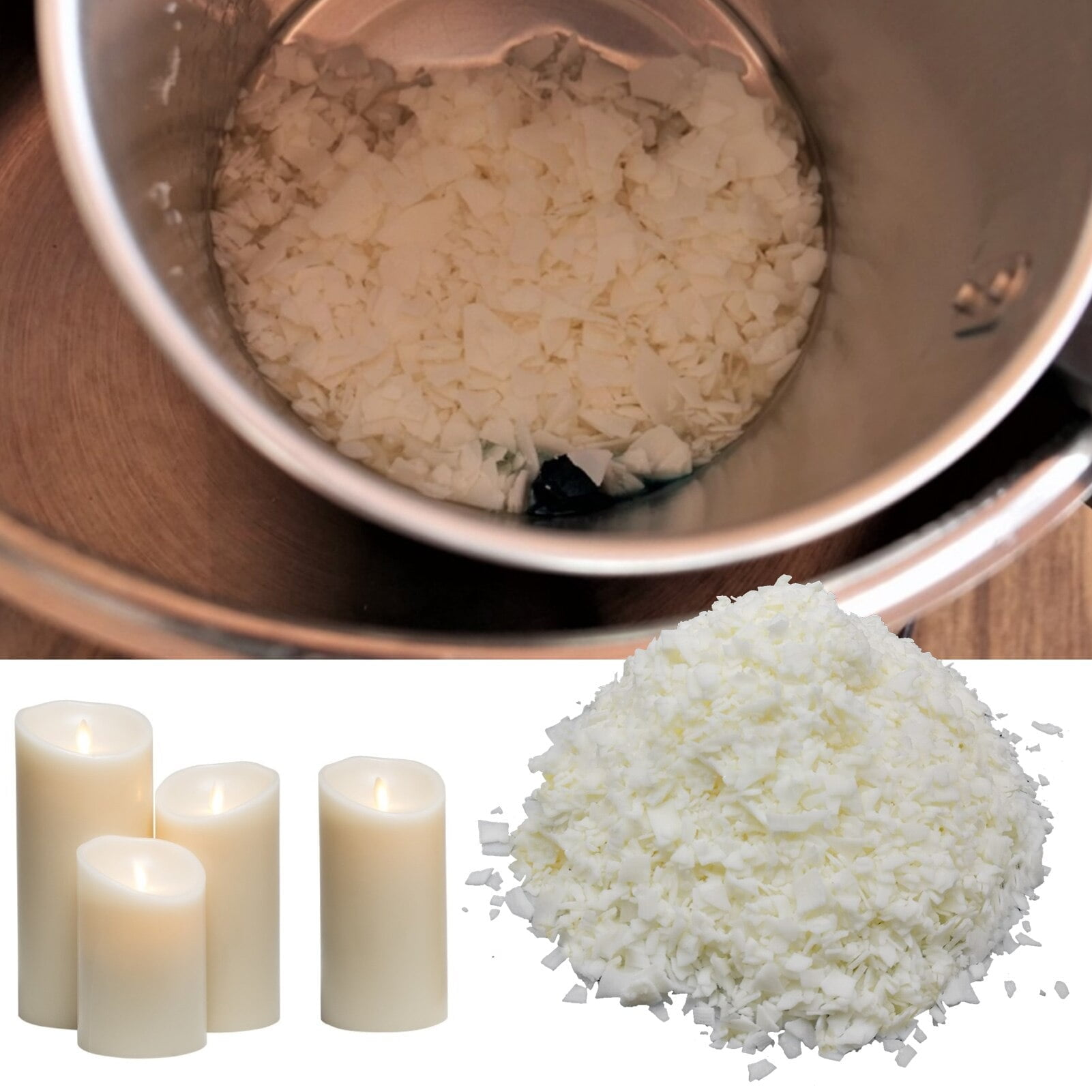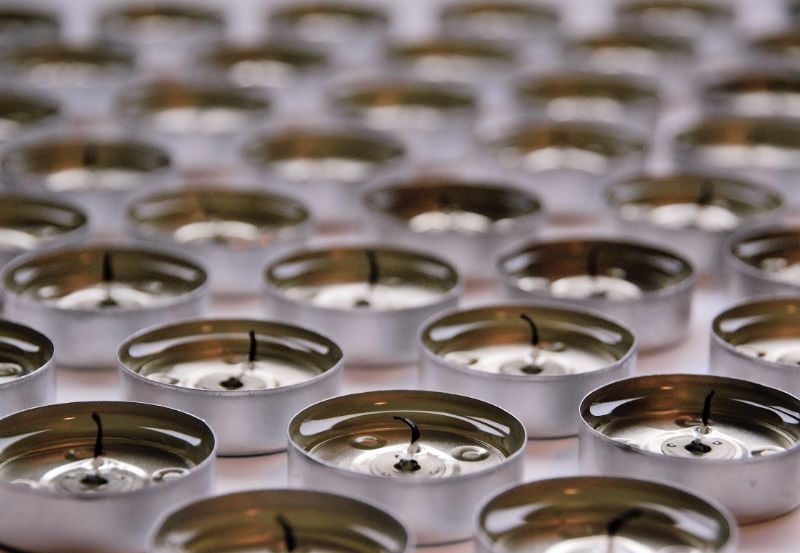Introduction
When it comes to candle making, wax is the essential element. Wax provides both structure and scent to a finished product, making it an integral part of any successful candle. But not all waxes are created equal, and it can be hard to know which type of wax is the best for your specific needs. Many factors come into play when selecting wax for candle making, such as melting point, scent throw, cost and availability.
When considering which kind of wax is best for a particular product or style of candle, there are several factors that should be taken into account such as scents, colors and viscosity of the melt pool. Paraffin wax has long been used in candle making and is still one of the most common types of wax used due to its affordability and availability. However, soy and beeswax have grown in popularity in recent years because they burn more cleanly than paraffin and release fewer pollutants into the environment. Gel candles also require specialized materials; though not technically a “wax” per se, these products utilize hydrocarbon chains instead of traditional wicking materials like cotton wicks or wood wicks. Finally, blends that combine materials from different sources are becoming increasingly popular as well due to their ability to combine low price with attractive scents or colors. Ultimately, it’s up to you to decide which type best fits your needs!
Different Types of Wax Used in Candle Making
There are many different types of waxes used in candle making. Each has its own unique properties that make it suitable for certain types of candles. The most common waxes used are paraffin, soy, beeswax and vegetable waxes. Paraffin wax is the most popular choice for container candles due to its low melting point and affordability. It is also popularly used in votive candles, pillar candles and taper candles. Soy wax is a relatively new candlemaking material that is gaining favor amongst eco-friendly customers because it’s biodegradable and renewable derived from soya bean oil. Beeswax is an all-natural wax made by honeybees and is renowned for its unique scent and color palette as well as its longevity when lit. Finally, vegetable waxes like palm, rice bran, cottonseed and hemp are gaining more popularity as they’re made of depleted resources that would otherwise go to waste.
Basic Category Breakdown
Paraffin Wax ” This type of wax is a by-product of the petroleum industry, making it widely available and relatively low-cost. Paraffin waxes are easily molded into a variety of shapes, making them ideal for creating intricate candle designs. It has a higher melting point than other wax types, allowing candles to burn longer. The downside to paraffin is its tendency to produce smoke as it burns and its release of petrochemical compounds when burned, which can be harmful if inhaled.
Soy Wax ” Soy waxes are made from soybeans and are considered alternatives to paraffin wax because they burn cleaner and do not release potentially dangerous chemicals. They offer good scent throw without the extra additives so you get maximum enjoyment from your fragrance oils. Since soy is softer than other waxes at room temperature, care must be taken to ensure that while melting or pouring the wax does not become too hot as this can cause oxidation or other negative effects on candle quality.
Beeswax ” Beeswax is produced naturally by honey bees and has been in use since antiquity, providing both medicinal and functional applications. As an ingredient in candles bee’swax provides both clean burning characteristics and a positive burn time with good adhesion around wick cores; however, their high cost of production limits widespread use in making candles for commercial purposes. Additionally beeswax has a natural yellow/amber tint which affects finished product color in relationship to scent selection giving further limitations for usage in colored differently scented layers of a multi-color design application.
Coconut Wax ” Coconut wax tends to have slightly less throw than soy or paraffin but makes up for it with its creamy consistency that also yields amazing glass adhesion characteristic reducing run down from sides/bottoms of candle containers once cooled following pour processes very effectively particularly useful in pillar style candles manufactured this way eliminating any need for adhesives such as hot glue or similar products used often on less preferable pouring processes such as extreme heat variations causing air bubbles trapped inside each layer – resulting in holes that detract greatly from aesthetically pleasing visual overall intended look affecting choice instead by potential customers visually judging potential purchases impactively!
Paraffin Wax Benefits, Drawbacks, and Best Uses
Paraffin wax is a popular choice for candle making because it is inexpensive, easy to find and work with, and has a long burn time. Its greatest benefit is that it holds fragrance oils very well and can create highly scented candles. It melts evenly, and can also be used to make votive candles, pillars, jars, tins or tealights. However, paraffin wax can be difficult to completely clean up after usage as the spilled wax quickly solidifies when it cools down. Additionally, as paraffin contains petroleum as one of its main ingredients, some people are apprehensive about using them due to environmental concerns.
Overall, paraffin wax is widely regarded as being cost-effective and reliable for making all types of candles when compared with beeswax or soy wax. When thinly spread on the wick tab before inserting the wick into the mold (or jar), it will help keep the wick from unraveling over time – a feature which other types of wax do not offer. Paraffin can often come in flakes (granules) which melt quickly at low temperatures and are easy to work with even for beginner candle makers. It may also come in blocks which cannot easily be broken into during handling and/or transport.
Soy Wax Benefits, Drawbacks, and Best Uses
Soy wax is one of the most popular choice for making candles because it is natural, sustainable, eco-friendly, biodegradable and renewable. Soy wax also holds colour and scent well, burning evenly and slowly. Soy candles also last approximately 50% longer than paraffin-based candles.
The main drawbacks to soy wax include an inconsistent burn rate and sometimes frosting over if not kept at a consistent temperature. It can also be more expensive and require more additives than other types of waxes.
Soy wax is best used for container candles, tarts, votives and tea lights. It can also be used in novelty or sculpted candles but this type of candle often needs to have additional additives added to ensure they don’t deform while they cool down after each pour cycle.
Beeswax Benefits, Drawbacks, and Best Uses
Beeswax is one of the oldest, most natural and long-lasting waxes used for candle making. It has many benefits, including the fact that it is 100% natural, has a long burning time, and produces a pleasant honey-like scent when burned. The drawback to beeswax is that it is one of the more expensive waxes. In addition, because it is softer than paraffin or soy waxes, you’ll need to use pre-tabbed wicks with your candles as they are much easier to keep upright in the melt pool.
Best uses of beeswax are pillar candles, votives and container candles. Beeswax melts at 150° F so when melting it, care must be taken not to overheat otherwise discoloration can occur. It’s also not as easy to dye as paraffin and thus often remains naturally light in color with a nice translucency. Beeswax holds scent well and makes lovely scented candles. A hint of beeswax will linger on all types of candles adding an extra layer of aroma pleasure even if the candle doesn’t contain scent oils!
Coconut Wax Benefits, Drawbacks, and Best Uses
Coconut wax is a popular choice for making candles due to its many benefits. It has a creamy white color and a mild, slightly sweet scent that some find inviting. Coconut wax is naturally vegan and eco-friendly, as it uses sustainably sourced materials. Additionally, it has excellent hot and cold scent throw abilities, meaning that the scent of the candle will be stronger when lit than when unlit.
One of the drawbacks of coconut wax is its cost. It tends to be more expensive than other types of candle waxes, making it less budget friendly for some people. Another drawback to consider is how quickly synthetic scents can lose their intensity in coconut wax due to its low melting point. Finally, while including an appropriate wick size can minimize tunneling and create strong flames, experience is needed to achieve optimal performance as coconut wax demands specific wicking techniques worthy of consideration.
The best uses for coconut wax are for those looking for an eco-friendly option with great cold and hot scent throw ability and don’t mind spending more on materials. It’s also great if you enjoy using essential oils instead of synthetic fragrances as they tend to perform better in this type of wax. However, if you prefer using synthetic fragrances or want something that’s cheaper then it might not be the best option for you in terms of price-performance ratio considering the other candle-making materials available today.
Factors to Consider When Choosing the Best Wax for Your Candles
When choosing the best wax for candle making, there are several factors that should be taken into consideration. First, it is important to consider the melting point of the wax – some waxes have higher melting temperatures than others, so understanding what temperature your candles will need to reach during production is essential before selecting a wax for your project. Next, you should consider optimal container adhesion – some waxes do not adhere as well to containers as others, leaving gaps between it and the walls or uneven layers. Additionally, you should research how the wax behaves during its burning cycle ” some types of wax produce thicker flames and smoke or even release strong scents when burned. It’s critical to understand these traits before purchasing a particular type of wax for your project. Lastly, you should keep in mind that natural beeswax and paraffin require additional additives like stearic acid and polyethylene beads whereas soy candles can be made without any added ingredients. Taking all of these elements into account will help ensure that you make an informed decision on the right kind of wax for your candle-making needs.
Important Tips for Using Wax in Candle Making
When it comes to candle-making, it is important to use the right type of wax for your project. The type of wax you choose will influence the burning performance, appearance, and smell of the finished product. Some popular waxes used in candle-making include paraffin, beeswax, soy wax, and vegetable wax. When selecting a specific wax for your candles, be mindful of its melting point as this can have an effect on how much fragrance oil may be added without compromising burn performance.
When working with wax for candle-making, it’s important to follow some safety precautions. Always exercise caution when melting wax as it becomes extremely hot when heated. Be sure to keep all materials away from children or animals during the process and always wear protective eyewear and gloves. It’s also important to consider proper ventilation as some unsafe fumes may arise when melted and handled incorrectly; using a double boiler method is recommended to keep safety hazards at bay while still achieving desired results. Additionally, make sure to use only heat-resistant containers specifically made for handling hot liquids when melting your wax; never use plastic containers or aluminum foil containers that could melt or leak toxic substances due to their low melting points. Lastly, avoid direct contact with skin by allowing the cooled wax to harden before handling.
Conclusion
In conclusion, there is no one-size-fits-all type of wax to use when making candles. Each type has its own unique characteristics that may make it a more suitable choice for a particular project. From paraffin and beeswax to soy and palm waxes, each has its advantages and disadvantages, meaning you should carefully consider the best option for your needs when selecting the wax for your candle making. Ultimately, by choosing the right type of wax for your candles you’ll ensure the best possible results with an excellent finish!

Welcome to my candle making blog! In this blog, I will be sharing my tips and tricks for making candles. I will also be sharing some of my favorite recipes.





